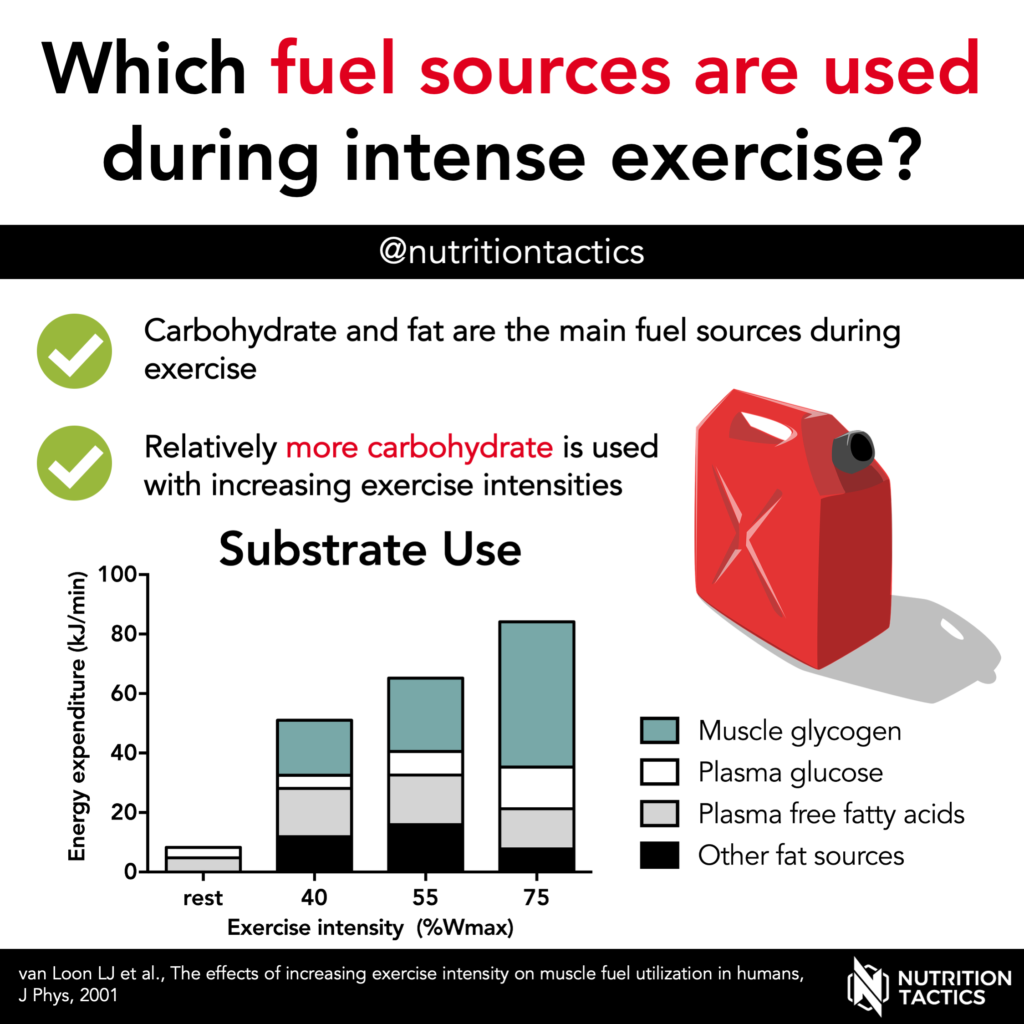What fuel sources are used during different exercise intensities?
Carbohydrate and fat are the main fuel sources during exercise. However, carbohydrate can be oxidized (burned as fuel) at a higher rate when compared to fat. How does this affect their contribution during different exercise intensities?
This study investigated the contribution of different fuel sources during increasing exercise intensities. Fuel source contribution was measured during rest, at 40, 55, and 75% of the maximum wattage.
As expected, higher exercise intensity resulted in higher energy expenditure. However, a much higher proportion of energy came from carbohydrates at higher intensities.
Carbohydrate is mainly stored as muscle glycogen. However, the amount of stored muscle glycogen stored is relatively small and may therefore become depleted during prolonged exercise. This provides the rationale of ingesting carbohydrates during prolonged exercise to improve performance (e.g. sports drinks).
For fat loss, should you exercise at the intensity that maximized fat oxidation (burning of fat as fuel)?
No.
While a more moderate exercise intensity burns more fat during exercise, this neglects what would happen afterward. A higher intensity burns more muscle glycogen. When you would then consume a meal, the carbohydrates would be used to refill muscle glycogen instead of being stored as fat. This is somewhat of a simplification, but the main message is that caloric balance (calories in versus out) determines fat loss.
Fuel selection is important for sports nutrition, not for fat loss!
Go to the next infographic in the carbohydrate series:
How much glucose from sports drinks can be used as fuel?


Leave a Reply